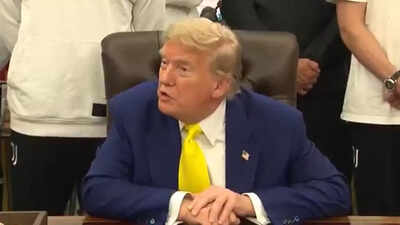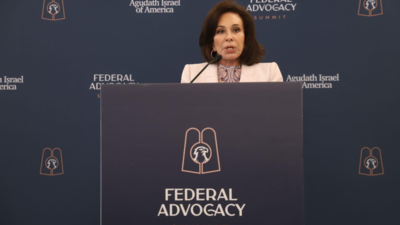In an unprecedented reconfiguration of the relationship between higher education and the federal government, several of the United States’ most prestigious universities have capitulated, some quietly, others under public scrutiny—to the hardball tactics of President Donald Trump’s administration. Under threat of losing billions in federal research funding, elite institutions have agreed to sweeping concessions, financial penalties, and ideological alignment with a White House intent on recasting academia in its own image.At the heart of the confrontation is the administration’s aggressive use of funding as leverage. Research dollars—historically doled out based on academic merit—are now weaponized to coerce ideological compliance. In a departure from past presidential norms, Trump has fused his political agenda with federal purse strings, tying grants to reforms in campus speech, gender definitions, diversity policy, and even interpretations of antisemitism.
The Columbia precedent
Columbia University was the first to yield. On July 23, the Ivy League institution agreed to pay a staggering $200 million fine to the U.S. Treasury in exchange for reinstatement of suspended research grants. Over $400 million in federal funding had been pulled earlier in the year, largely due to the administration’s claim that Columbia failed to adequately address antisemitic incidents during the Israel-Hamas war.In its agreement, Columbia consented to overhauls of its student disciplinary protocols and formally adopted the International Holocaust Remembrance Alliance’s (IHRA) definition of antisemitism, a controversial benchmark critics say conflates political criticism of Israel with hate speech. Additionally, the university committed $21 million to a compensation fund for faculty and staff who alleged discrimination.Yet, even in compromise, Columbia drew a line in the sand: the deal includes language asserting that the federal government cannot dictate its hiring, admissions, or academic speech. For Trump officials, however, the Columbia deal serves as a “road map” for future enforcement, a blueprint of how universities might “come to heel.”
Brown and Penn : Ideological bargains
Brown University followed with a $50 million payment directed not to federal coffers but to Rhode Island’s workforce development programs—an unusual stipulation reflecting the administration’s local economic messaging. In exchange, the government lifted funding freezes and ended probes into alleged antisemitism and racial bias in admissions. As part of the settlement, Brown agreed to remove race as a consideration in admissions and adopt the administration’s binary definitions of gender.The University of Pennsylvania reached its own compromise, agreeing to retroactively disqualify swimming records set by transgender athlete Lia Thomas and issue a formal apology to female swimmers the administration argued had been disadvantaged. The Education Department had linked this civil rights case to a broader effort to ban transgender athletes from women’s sports, resulting in a $175 million freeze in Penn’s research funding prior to the agreement.Like Columbia’s and Brown’s, Penn’s agreement included a clause preserving curricular independence, but the impact of the federal intrusion had already left its mark.
The Holdouts: Harvard , Cornell , and beyond
Not all institutions have acquiesced. Harvard University, long a symbolic adversary of Trump’s populist conservatism, faces the largest penalty yet: a freeze on more than $2.6 billion in federal research support. The administration has accused Harvard of fostering antisemitism and enabling ideological extremism—charges the university disputes through multiple lawsuits.Negotiations continue, but administration officials have reportedly demanded a penalty surpassing Columbia’s. For Harvard, the stakes are not only financial but existential: ceding to such terms may compromise the academic autonomy it has zealously guarded for nearly four centuries.Cornell University, Northwestern, and Duke have likewise seen vast sums—ranging from $108 million at Duke to over $1 billion at Cornell—frozen amid allegations of civil rights violations, racial preferences in hiring, and insufficient protection for Jewish students. In Princeton’s case, dozens of federal research grants were suspended without any explicit reasoning—underscoring the unpredictability and opacity of the administration’s tactics.
A presidency reshaping academia
Trump’s strategic targeting of elite universities reflects a broader ideological crusade. He has painted Ivy League institutions as bastions of liberal dogma, harboring what his administration sees as anti-American, antisemitic, and discriminatory practices. Unlike any of his predecessors, Trump is using federal funding as both cudgel and carrot—punishing noncompliance while rewarding universities that align with his ideological framework.Critics argue this is a dangerous politicization of education, undermining the intellectual independence and open inquiry that universities are meant to protect. Supporters counter that it’s long overdue corrective action against institutions they view as detached from public values.What is undeniable is the chilling effect: colleges across the country now operate under the specter of federal scrutiny, where the cost of defiance is measured not only in dollars but in compromised autonomy.
Autonomy at a price
These developments mark a watershed moment in American higher education. The Trump administration’s wielding of federal research dollars as a means of ideological enforcement has redrawn the contours of university-government relations. Institutions once thought untouchable now find themselves making fraught calculations, balancing their principles against existential financial risk.For elite colleges, the question is no longer just about academic excellence—it is about whether independence can survive in an era where funding is contingent upon political fealty.






